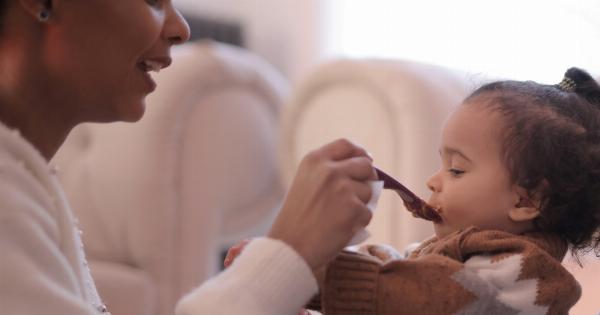Breastfeeding is the best way to provide your baby with the nutrients they need to grow and thrive. It is recommended by the American Academy of Pediatrics (AAP) that infants should be breastfed exclusively for the first six months of life.
Breastfeeding can be challenging, and some new mothers may experience discomfort or pain while nursing. That’s where breast shields come in. A breast shield is a device that can help mothers overcome breastfeeding challenges and make breastfeeding more comfortable for both mother and baby.
What is a breast shield?
A breast shield, also known as a nipple shield, is a thin, silicone shield that is worn over the nipple and areola during breastfeeding.
It is designed to mimic the feel of a mother’s breast and can help make it easier for a baby to latch on to the breast. Breast shields can also help protect sore or cracked nipples.
When should you use a breast shield?
Breast shields can be helpful in several situations. If you are experiencing pain or discomfort while breastfeeding, a breast shield can help protect your nipples from further damage.
Breast shields can also help babies who are having difficulty latching onto the breast. If your baby is premature or has a weak suck, a breast shield can help make it easier for them to feed. Additionally, breast shields can be helpful for mothers who have flat or inverted nipples.
How to use a breast shield
Using a breast shield is relatively simple. Here are the steps to using a breast shield:.
- Wash your hands to reduce the risk of infection
- Place the breast shield over your nipple and areola, making sure that it is centered and covering the entire areola
- Press the shield against your breast to create a seal
- Position your baby at the breast and encourage them to latch onto the shield
It is important to note that using a breast shield should not replace seeking advice from a lactation consultant or healthcare provider. If you are experiencing breastfeeding difficulties, it is important to address the root cause of the problem.
The benefits of using a breast shield
There are several benefits to using a breast shield:.
- Reduced pain and discomfort: Breast shields can help protect sore or cracked nipples, which can make breastfeeding more comfortable for the mother.
- Improved latching: Breast shields can make it easier for babies to latch onto the breast, which can improve feeding and prevent issues such as poor weight gain.
- Increased milk supply: Breastfeeding frequently is important for milk production, and using a breast shield can help facilitate frequent feedings by reducing pain or discomfort.
- Helpful for certain breastfeeding challenges: Breast shields can be helpful for mothers with flat or inverted nipples, or babies who have difficulty latching onto the breast.
Risks of using a breast shield
While there are many potential benefits to using a breast shield, there are also some risks to be aware of. These include:.
- Reduced milk transfer: Some studies have suggested that breast shields may reduce the amount of milk that a baby is able to extract from the breast, which can impact milk supply.
- Inconsistent use: Using a breast shield consistently can be difficult, and some mothers may find that it negatively impacts their milk supply or ability to breastfeed without the shield.
- Infections: Breast shields can create a warm, moist environment that can increase the risk of infections such as thrush.
Choosing the right breast shield
There are many different types of breast shields on the market, so it can be overwhelming to choose the right one. Here are some factors to consider when choosing a breast shield:.
- Size: Getting the right size breast shield is important to ensure proper suction and milk transfer.
- Material: Breast shields are typically made from silicone, but there are also latex options available for those with latex sensitivities.
- Shape: There are different shapes of breast shields available, including round and oval. Some shields have a natural breast shape, which can help improve comfort and latch.
- Brand: Some mothers may have a preference for a particular brand of breast shield based on personal experience or recommendations from others.
When to stop using a breast shield
Breast shields are intended as a temporary solution to breastfeeding challenges, so eventually, most mothers will want to wean their babies off of the shield. Here are some signs that it may be time to stop using a breast shield:.
- Improved latching: If your baby is able to latch onto the breast without the shield and is feeding effectively, it may be time to stop using the shield.
- Less pain or discomfort: If your nipples have healed and you are no longer experiencing pain or discomfort while breastfeeding, you may be able to stop using the shield.
- Increased milk supply: If you were using a breast shield due to low milk supply, and your milk supply has improved, it may be time to try breastfeeding without the shield.
It is important to note that every breastfeeding journey is different, and there is no one “right” way to breastfeed. While breast shields can be helpful in some situations, they may not be the best option for every mother and baby.
Conclusion
Breastfeeding can be a rewarding and challenging experience for new mothers. Breast shields are a helpful tool for mothers who are experiencing pain or discomfort while breastfeeding, or for babies who are having difficulty latching onto the breast.
When used correctly, breast shields can provide many benefits, including reduced pain, improved latching, and increased milk supply. However, there are also some risks to be aware of, such as reduced milk transfer and the risk of infections.
The decision to use a breast shield should be made in consultation with a healthcare provider or lactation consultant, and mothers should also consider factors such as size, shape, and material when choosing a breast shield. Ultimately, the goal is to make breastfeeding as comfortable and rewarding as possible for both mother and baby.





























